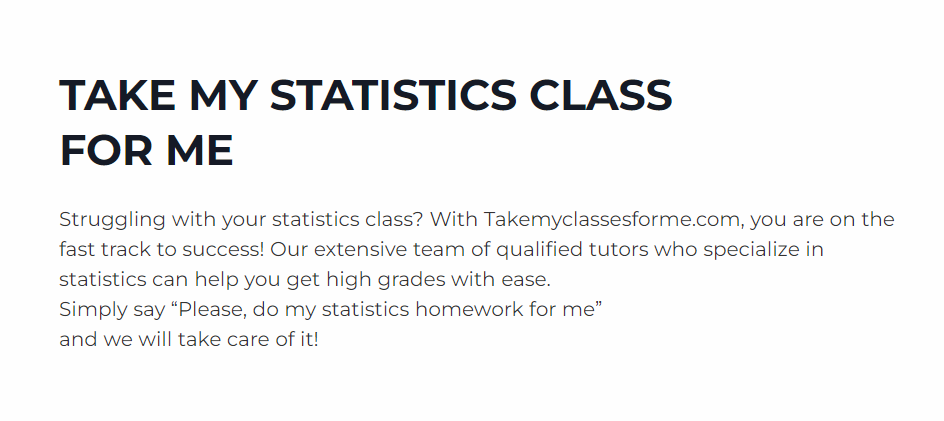In today’s digital age, the power of education has been magnified by the vast array of software and internet resources. Many of these resources are available to college students. These tools offer incredible opportunities for enhancing learning and improving organization.
Let’s explore how these resources can empower students on their academic journey. In higher education, students are finding ways to leverage software and internet resources. They use it for academic excellence. With many tasks and papers to write, utilizing and take my statistics class is good. These resources provide students with diverse learning platforms and interactive study tools. You can choose an expert writer with access to a wealth of information.
This enables them to tackle complex assignments and projects. Students often make use of services like essay writing platforms. This ensures that their written work meets the highest standards. This holistic approach empowers students to excel in their studies. At the same time, they can manage their academic responsibilities thoughtfully.
1. Diverse Learning Platforms
Traditional classroom settings are no longer the sole means of education. Online learning platforms have emerged as versatile tools. They accommodate various learning styles. Students can access lectures, quizzes, and study materials at their own pace. Websites like Coursera and edX provide a wealth of courses on subjects. They range from mathematics to humanities. These platforms empower students to customize their learning experience. Ultimately, this makes education more accessible and flexible.
These tools are like magical helpers that make learning more accessible and enjoyable. Imagine having your unique way of learning – that’s what online platforms provide. You can learn about cool stuff like science, art, and coding. These websites have videos and fun activities to help you understand things in your own time. Not only that but there are also special tools to help you remember things better.
2. Interactive Study Tools
Studying no longer means just reading textbooks. Interactive study tools such as flashcard apps engage students in the learning process. Quizlet, for example, allows students to create and share study decks.
3. Research Made Easy
Gone are the days of sifting through endless library catalogs for research materials. Online databases, such as PubMed and Google Scholar, provide instant access to many scholarly articles. They also provide access to papers and research studies. This not only streamlines the research process. It also exposes students to a broader range of perspectives, enhancing the quality of their work.
4. Organizational and Productivity Tools
Balancing classes, assignments, projects, and extracurricular activities can be overwhelming. This is where productivity tools shine. Applications like Trello and Notion help students organize tasks and set reminders. By managing their time and responsibilities, students can reduce stress. This will help them achieve better results.
5. Virtual Libraries and E-Books
The days of lugging heavy backpacks filled with textbooks are becoming a thing of the past. Many academic institutions now offer virtual libraries. There, students can access e-books, journals, and research materials online. This not only lightens the physical load but also promotes sustainability.
6. Language Learning Apps
Globalization has made multilingualism a valuable skill. Language learning apps like Duolingo and Rosetta Stone enable students to learn new languages at their own pace. These apps employ gamification techniques. They make learning fun and engaging. They break down language barriers and open doors to international opportunities.
7. Collaboration Beyond Boundaries
Group projects and collaborative learning have taken on a new dimension. Platforms like Microsoft Teams, Slack, and Google Workspace facilitate seamless communication. They offer cooperation among students, regardless of their geographical locations. This mirrors the interconnected nature of the modern workforce.
8. Skill Development Platforms
Beyond traditional academic subjects, students can use online resources to acquire practical skills. Platforms like LinkedIn Learning and Skillshare offer courses on everything. You can pick lessons from coding and graphic design to public speaking and leadership skills. This equips students with a well-rounded skill set. It can give students a competitive edge in the job market.
9. Personalized Learning Pathways
One size doesn’t fit all, especially when it comes to education. Adaptive learning platforms like Khan Academy and Coursera offer personalized learning pathways. These platforms use algorithms to tailor lessons to students’ strengths and weaknesses. This ensures a more effective and efficient learning experience. This approach acknowledges that every student learns differently. Remember, everyone deserves a unique educational journey.
10. Virtual Tutoring and Office Hours
Need help with a difficult concept? Virtual tutoring and online office hours have become invaluable resources for students. Many institutions offer virtual sessions. There, students can ask questions and engage in discussions with tutors and professors. This accessibility promotes a supportive learning environment. It also ensures that students stay caught up.
11. Stay Engaged with Online Discussions
Classroom discussions have moved beyond the physical classroom walls. Online forums and social media groups allow students to continue conversations. Students can share insights and debate topics outside of regular class hours. This fosters a sense of community. It encourages active participation, enhancing the overall learning experience.
12. Access to Open Educational Resources (OER)
The cost of textbooks can be a burden for many students. Open Educational Resources (OER) have emerged as a solution. These resources include free books and lecture notes. Platforms like OpenStax and MERLOT offer a wide range of OER. This makes quality educational content accessible to all students.
13. Virtual Reality (VR) for Immersive Learning
The world of virtual reality has entered the realm of education. With VR technology, students can embark on virtual field trips and explore historical sites. They can simulate complex scientific experiments. This immersive approach not only makes learning more engaging. It also allows students to visualize and experience concepts that might be challenging to grasp.
In Conclusion
The marriage of education and technology has transformed the way students learn. Software and internet resources have made education more accessible, interactive, and organized. By leveraging these tools, students can confidently embark on their academic journey. They will be equipped with the resources they need.










